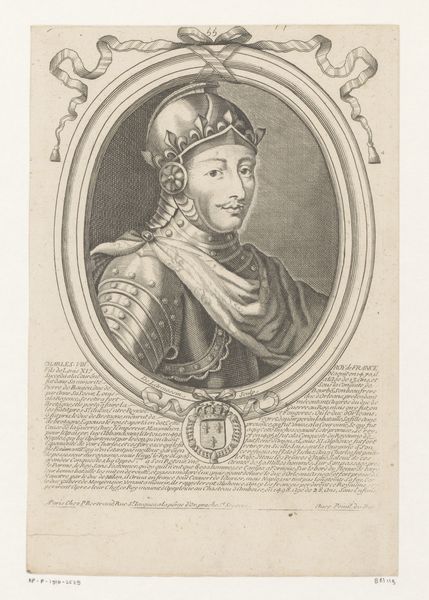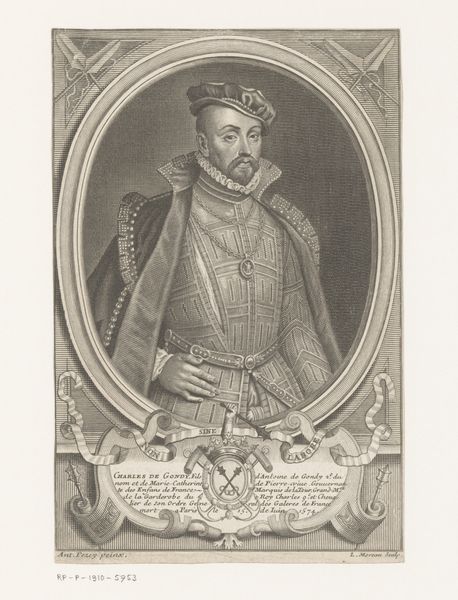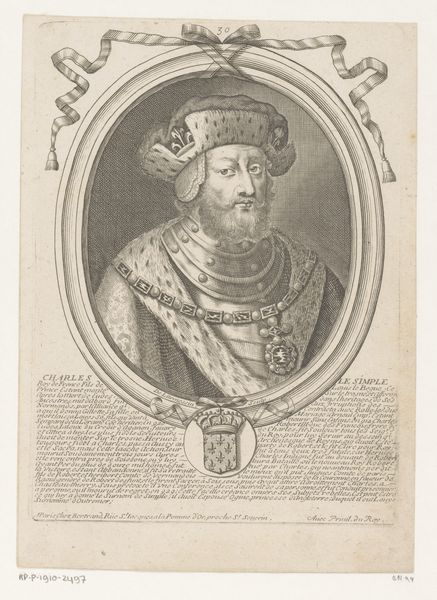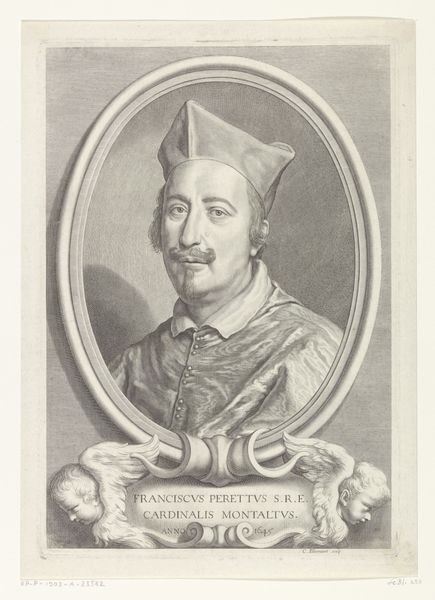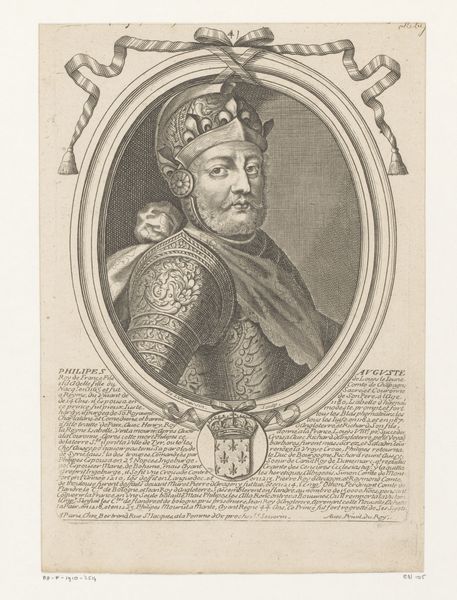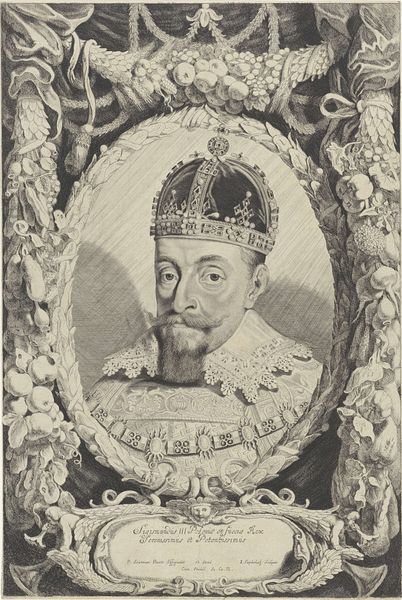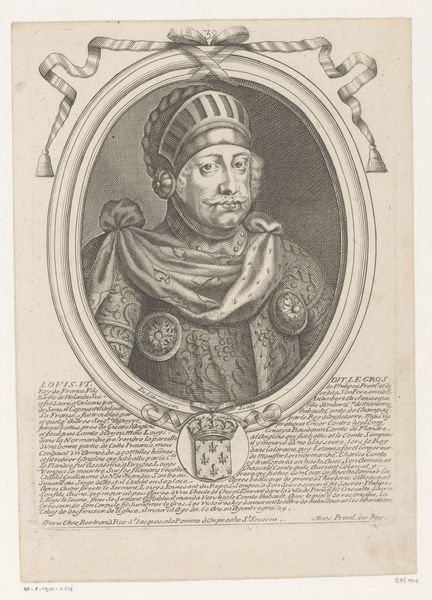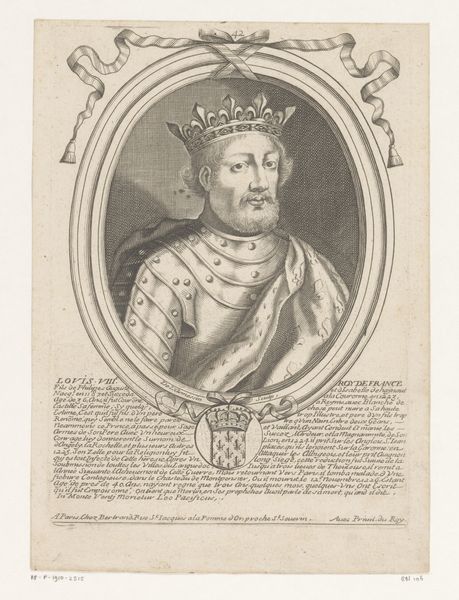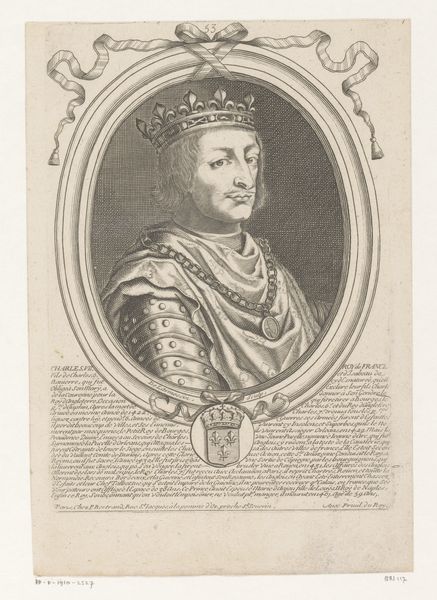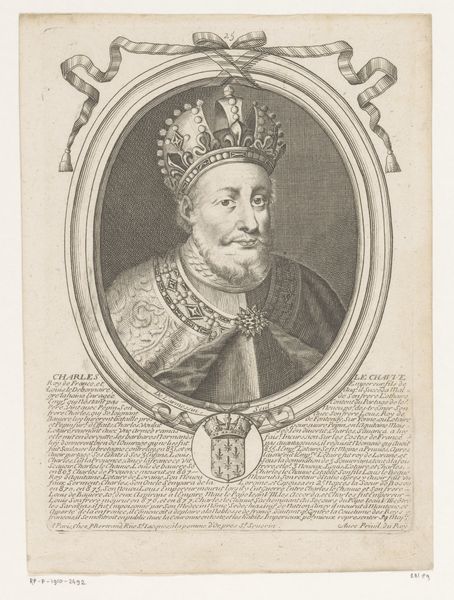
Portret van Mehmet IV, sultan van het Ottomaanse Rijk 1642 - 1694
0:00
0:00
nicolasdeilarmessin
Rijksmuseum
print, engraving
#
portrait
#
baroque
# print
#
old engraving style
#
islamic-art
#
history-painting
#
engraving
Dimensions: height 230 mm, width 169 mm
Copyright: Rijks Museum: Open Domain
Curator: This print is titled "Portret van Mehmet IV, sultan van het Ottomaanse Rijk," made sometime between 1642 and 1694. It’s currently held in the Rijksmuseum collection. Editor: There's a striking formality to it, a controlled sense of power rendered through meticulous lines. The ornate details of his clothing are captivating. Curator: Yes, this engraving meticulously captures the status of Mehmet IV. Consider the labor involved: the artist, Nicolas de Larmessin, carefully etched each line into a metal plate. The proliferation of these prints enabled a wide distribution, serving a very specific function in disseminating images of power and authority. Editor: Absolutely. And think about the context: who was this image intended for? Certainly not the average Ottoman subject. It speaks to a very deliberate construction of Ottoman power for a Western audience, at a time of complex relationships and conflicts between the Ottoman Empire and Europe. The details in his regalia—the turban, the scepter—become potent signifiers of his authority and cultural identity within those intercultural dynamics. Curator: The choice of engraving as a medium speaks volumes as well. It was a technique that allowed for relatively easy reproduction and dissemination compared to, say, painting. So the mechanical reproduction facilitates the message it’s trying to convey. Editor: I agree. It highlights the Sultan's identity but also underscores the representation and visual language associated with Baroque portraiture—melding different cultural signifiers. Curator: Looking closely, we can also see the texture achieved through the various etching techniques—the cross-hatching and the subtle variations in line weight—which indicates that time and material skill have converged in its production. Editor: I find it interesting how such a formal portrait offers insights into the relationship between empires, challenging what was promoted about cultural exchanges between the East and West and emphasizing power, representation, and the narratives we tell ourselves about history. Curator: Indeed, analyzing its creation and distribution forces us to consider labor, technology, and materials embedded in the art, not as divorced from larger social structures, but inherently interwoven into these cultural tapestries. Editor: For me, this work illuminates the powerful role art plays in negotiating identity and power across different worlds, constantly revealing its historical construction.
Comments
No comments
Be the first to comment and join the conversation on the ultimate creative platform.

